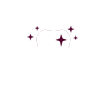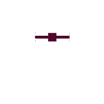What Is It?
Dental caries is the scientific term for tooth decay or cavities. It is caused by specific types of bacteria. They produce acid that destroys the tooth's enamel and the layer under it, the dentin.
Many different types of bacteria normally live in the human mouth. They build up on the teeth in a sticky film called plaque. This plaque also contains saliva, bits of food and other natural substances. It forms most easily in certain places.
These include:
- Cracks, pits or grooves in the back teeth
- Between teeth
- Around dental fillings or bridgework
- Near the gum line
The bacteria turn sugar and carbohydrates (starches) in the foods we eat into acids. The acids dissolve minerals in the hard enamel that covers the tooth's crown (the part you can see). The enamel erodes or develops pits. They are too small to see at first but they get larger over time.
Acid also can seep through pores in the enamel. This is how decay begins in the softer dentin layer, the main body of the tooth. As the dentin and enamel break down, a cavity is created.
If the decay is not removed, bacteria will continue to grow and produce acid that eventually will get into the tooth's inner layer. This contains the soft pulp and sensitive nerve fibres.
Tooth roots exposed by receding gums also can develop decay. The root's outer layer, cementum, is not as thick as enamel. Acids from plaque bacteria can dissolve it rapidly.
Symptoms
Early caries may not have any symptoms. Later, when the decay has eaten through the enamel, the teeth may be sensitive to sweet, hot or cold foods or drinks.
Diagnosis
A dentist will look for caries at each visit. The dentist will look at the teeth and may probe them with a tool called an explorer to look for pits or areas of damage. The problem with these methods is that they often do not catch cavities when they are just forming. Occasionally, if too much force is used, an explorer can puncture the enamel. This could allow the cavity-causing bacteria to spread to healthy teeth.
Your dentist will take X-rays of your teeth on a set schedule, and also if a problem is suspected. They can show newly forming decay, particularly between teeth. They also show the more advanced decay, including whether decay has reached the pulp and whether the tooth requires a root canal.
Newer devices also can help to detect tooth decay. They are useful in some situations, and they do not spread decay. The one most commonly used in dental offices is a liquid dye or stain. Your dentist brushes the nontoxic dye over your teeth, then rinses it off with water. It rinses away cleanly from healthy areas but sticks to the decayed areas.
Expected Duration
Caries caught in the very early stages can be reversed. White spots may indicate early caries that has not yet eroded through the enamel. Early caries may be reversed if acid damage is stopped and the tooth is given a chance to repair itself naturally.
Caries that has destroyed enamel cannot be reversed. Most caries will continue to get worse and go deeper. With time, the tooth may decay down to the root. How long this takes will vary from person to person. Caries can erode to a painful level within months or years.
Prevention
One way you can prevent cavities is by reducing the amount of plaque and bacteria in your mouth. The best way to do this is by brushing and flossing daily. You also can use antibacterial mouth rinses to reduce the levels of bacteria that cause cavities. Other rinses neutralize the acid in your mouth to make the environment less friendly to the growth of these bacteria.
You can reduce the amount of tooth-damaging acid in your mouth by eating sugary or starchy foods less often during the day. Your mouth will remain acidic for several hours after you eat. Therefore, you are more likely to prevent caries if you avoid between-meal snacks.
Chewing gum that contains xylitol helps to decrease bacterial growth. Unlike sugar, xylitol is not a food source for bacteria. Other products also can reduce the acid level in your mouth. Ask your dentist about them.
Another way to reduce your risk of cavities is through the use of fluoride, which strengthens teeth. A dentist can evaluate your risk of caries and then suggest appropriate fluoride treatments. Fluoride in water strengthens teeth from within, as they develop, and also on the outside. Dentists also can paint fluoride varnish on children's primary teeth to protect them from decay.
In adults, molars can be protected with sealants. In children, both baby molars and permanent molars can be sealed. Dentists also can use sealants on molars that have early signs of tooth decay, as long as the decay has not broken through the enamel.
Treatment
Caries is a process. In its early stages, tooth decay can be stopped. It can even be reversed. Fluorides and other prevention methods also help a tooth in early stages of decay to repair itself (remineralise). White spots are the last stage of early caries.
Once caries gets worse and there is a break in the enamel, only the dentist can repair the tooth. Then the standard treatment for a cavity is to fill the tooth. If a drill is used, the dentist will numb the area. If a laser is used, a numbing shot is not usually required. The decayed material in the cavity is removed and the cavity is filled.
Many fillings are made of dental amalgam or composite resin. Amalgam is a silver-grey material made from silver, mercury, copper or other metals. Composite resin offers a better appearance because it is tooth-coloured. Newer resins are very durable.
Amalgams are used in molars and premolars because the metal is not seen in the back of the mouth. Composite and ceramic materials are used for all teeth.
If a cavity is large, the remaining tooth may not be able to support enough filling material to repair it. In this case, the dentist will remove the decay and cover the tooth with a ceramic inlay, onlay or artificial crown.
Sometimes bacteria may infect the pulp inside the tooth even if the part of the tooth you can see remains relatively intact. In this case, the tooth will need root canal treatment. A general dentist or an endodontist will remove the pulp and replace it with an inert material. In most cases, the tooth will need a crown.
When to Call a Professional
The early stages of decay are usually painless. Only regular dental examinations and X-rays (or other caries-detecting devices) can show early trouble. If your teeth become sensitive to chewing or to hot, cold or sweet foods or drinks, contact your dentist.
Prognosis
If caries is not treated, it likely will cause the tooth to decay significantly. Eventually, uncontrolled decay may destroy the tooth.
Having caries increases your risk of more caries for several reasons:
- Caries is caused by bacteria. The more decay you have, the more bacteria exists in your mouth.
- The same oral care and dietary habits that led to the decay of your teeth will cause more decay.
- Bacteria tend to stick to fillings and other restorations more than to smooth teeth, so those areas will be more likely to have new caries.
- Cracks or gaps in the fillings may allow bacteria and food to enter the tooth, leading to decay from beneath the filling.





























